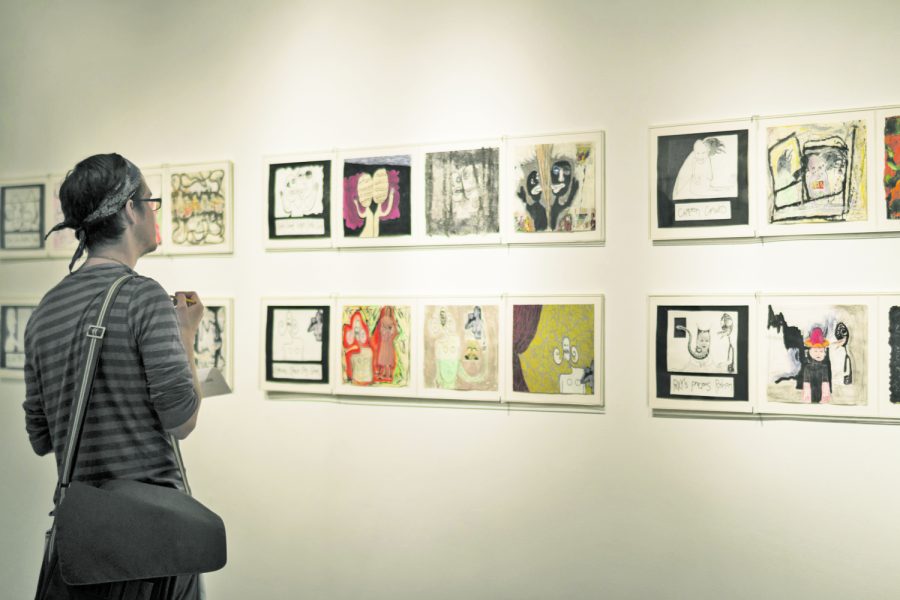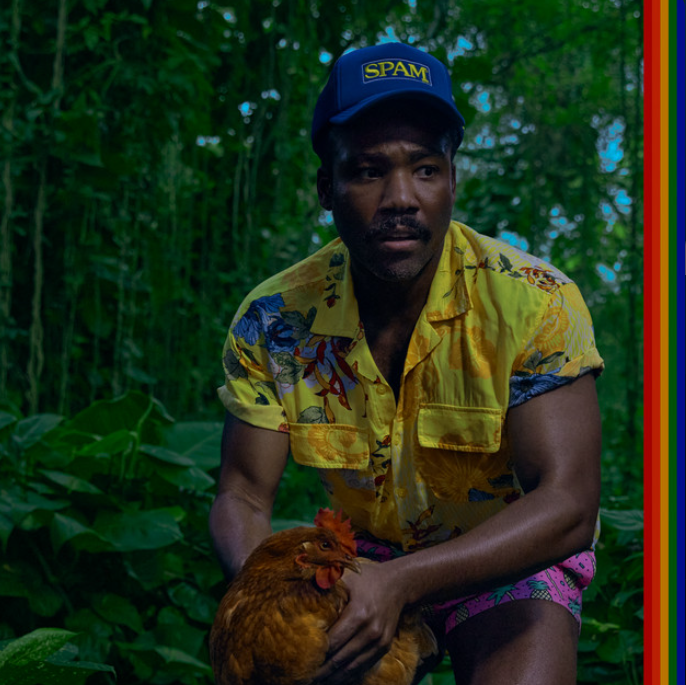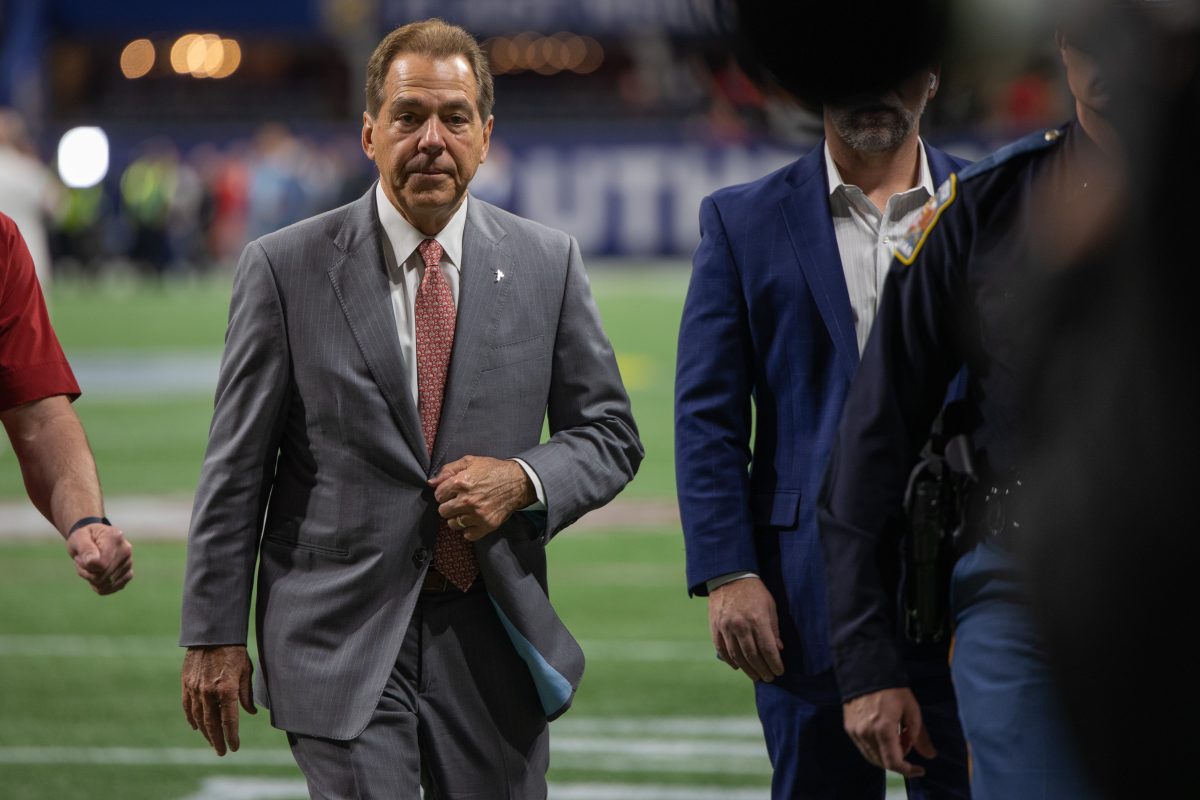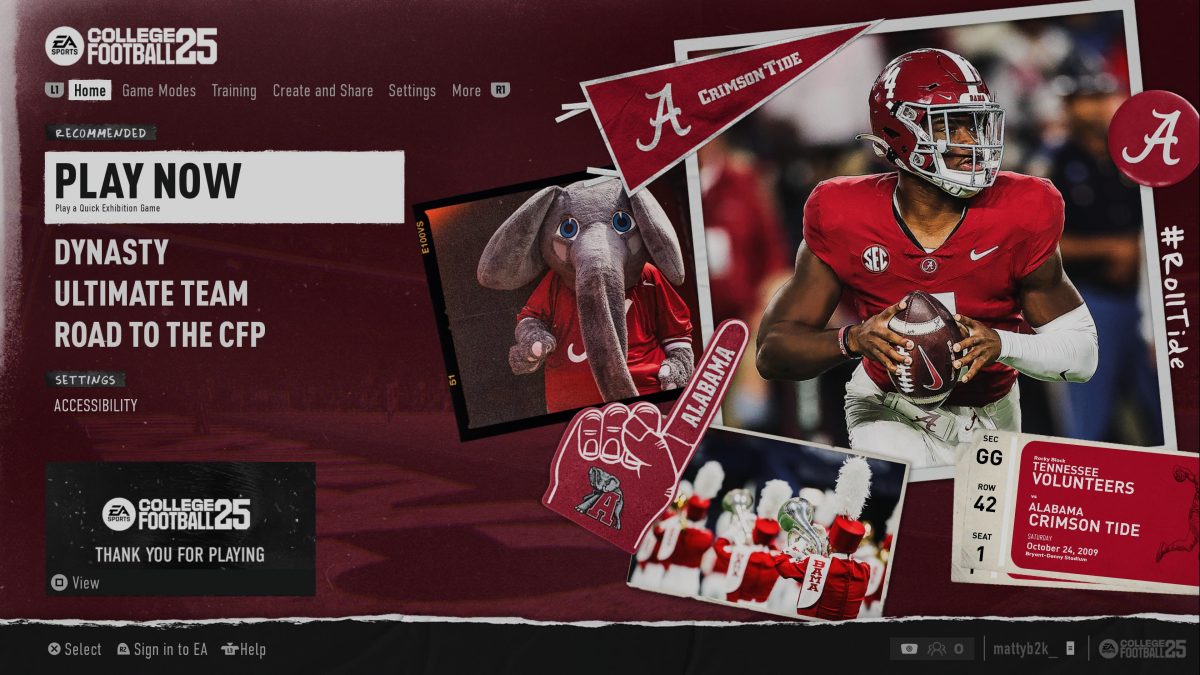A new exhibit at The University of Alabama allows viewers to choose the endings to thirteen stories told through drawings. In another exhibit, students are confronted with sculptures that capture the unease of the modern urban environment.
A new dual exhibition by Melissa Stern and Matt Ziemke opened on Oct. 6 and runs until Oct. 27 at Sella-Granata Gallery. The two separate shows, Stern’s “Loose Lips” and Ziemke’s “What it was, what it is and what it will be,” illustrate the differences in the artists’ methods and aesthetic goals.
Stern, a former anthropologist, created “Loose Lips” to deal with the idea of interactivity and the “art object.” Rather than having viewers passively consume art and contemplate it, they’re confronted with an open-ended story told in the paintings.
“The audience is an active participant in the project,” Stern said. “You the viewer are a crucial part of the art project because you finish the story.”
A form is given to all students who come through to allow students to vote on their favorite endings. After the exhibit closes, Stern plans to compile the winning interpretations into a book and donate it to the University.
Stern grew up around art, as her mother was a busy, frustrated advertising designer who painted on the side. She studied anthropology in college, focusing on non-western and indigenous art. She came to the realization, however, that her career couldn’t be spent in academia.
“What I loved was really making things,” she said. “Not studying them, not curating, just getting my hands dirty.”
Stern said that in the cultures she studied in school, the concept of an “art object” that is separate from a useful tool does not exist. Creativity is expressed through objects that have a practical or religious purpose. Here, an exhibit’s interest in engaging the viewer comes from this cultural idea.
The figures in Stern’s picture are simplistic, reminiscent of a child’s drawing or the works made by early man. These cartoonish characters come from her interest in early art and “outsider art,” the creative work made by people with no formal training. However, Stern said the figures also represent her personal style and view of the world.
In contrast, Ziemke’s exhibit presents sculpture that has a specific interpretation of the artist’s feelings on the urban environment. “What it was” consists of sculptures and wall tiles designed to convey through form and color the environment of the city, and the human relationship to land and resources.
“I’ve always been very interested in the visual impact of the landscape, and how places shape people and civilization,” he said.
Ziemke creates some sculptures with specific messages and others that he intends to be merely evocative and “trippy.” The process of him making ceramic art is spontaneous, and though he often is aware of the mood or tone that he’s trying to convey, the final product can change and take other forms.
“It’s all fluid, there’s not one specific way [I do things],” he said. “I don’t have a formula. Honestly, I don’t ever want to have a formula.”
Editors Note: In an original version of this article it said there were six stories in Melissa Stern’s exhibit. There are actually thirteen. The Crimson White regrets the error.







